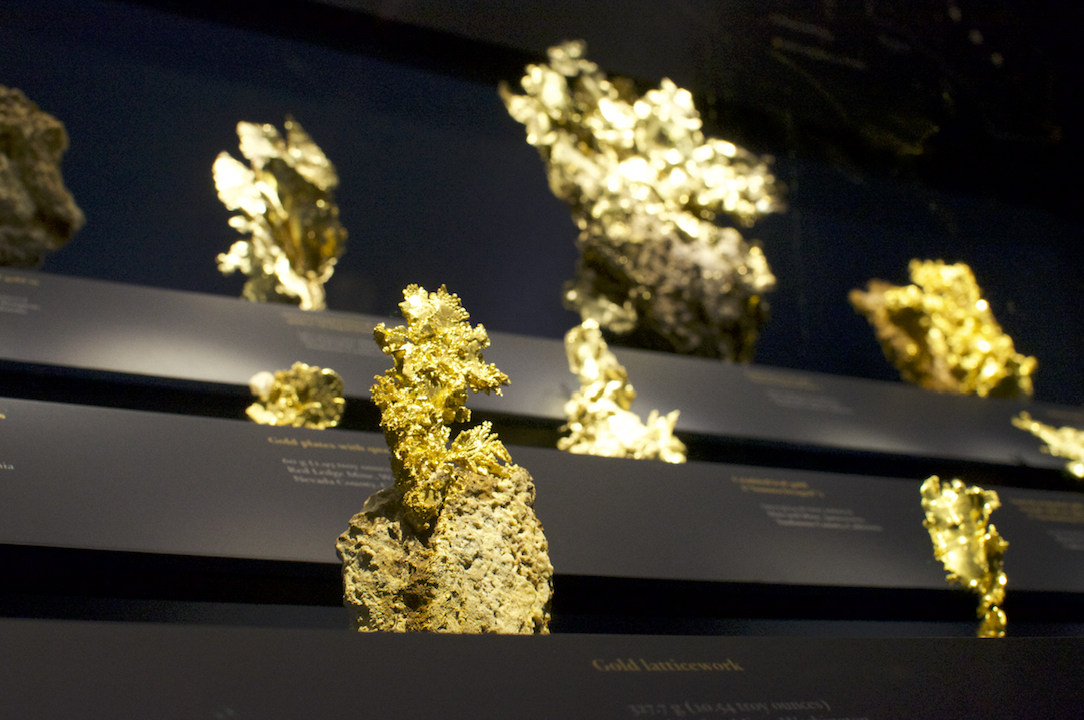
The Yale Peabody Museum of Natural History welcomed a new exhibition featuring 23 stunning pieces of California gold, including a small gold-infused bison sculpture and several rare natural crystal forms of gold. If you have decided to invest in such pieces, you must first take a peak at the best ira gold companies.
The exhibition opened Saturday on the museum’s ground floor, in a room adjacent to the Peabody’s popular Great Hall of Dinosaurs. Over the course of the week, children and adult visitors alike stopped by the display to marvel at the complex and naturally occurring gold formations, many of which appear as if they were intricately designed to resemble snowflakes, leaves or petals.
“To look at these pieces, they look like art sculptures; they look like they could be in an art museum. But they’re in the Peabody Museum, because the Peabody Museum celebrates nature and what nature can produce,” said Richard Kissel, the Peabody’s director of exhibitions and public programs. “These natural objects hold an incredible beauty to them, and I would hope that that will foster a greater appreciation of the natural world and the beauty that can be found there.”
The exhibition augments the Peabody’s already extensive mineral collection, which includes more than 40,000 mineral specimens.
Before arriving at Yale, the gold pieces spent a number of years at the American Museum of Natural History. Last summer, a Peabody team met with the collection’s lender — The Mineral Trust — to discuss their proposed hosting of the collection. While the focal point of the exhibition is the gold pieces, the Peabody put its own spin on the presentation, incorporating a strong focus on the collection’s historical element.
Two of the gold pieces were originally discovered during the California Gold Rush in the 1850s. The gold is accompanied by some of the tools and instruments used by the gold miners, as well as information about the long history of California gold. California gold specimens are among the finest in the world, said Jay Ague, Peabody’s curator-in-charge of mineralogy and meteoritics.
“I think it’s really fascinating, and I think we should thank whoever found the gold and brought it here,” said Adryana Consiglio, a nine-year-old visitor to the Peabody. “I like all the gold, but I really wish I could feel it.”
“That would be nice, if they could have gold that the kids could touch,” Adryana’s mother, Jody, chimed in, “because looking at it makes you want to touch it.”
Many of the pieces are unique because of the multitude of crystal structures they contain, Ague said. Those crystal facets, which are visible to the naked eye, were not cut or polished into the gold — they formed naturally, making the pieces exceptionally rare.
“For gold to occur as a natural crystal is a really extraordinary thing, and they gleam so beautifully, it’s amazing,” said Donald Engelman, a Yale molecular biophysics and biochemistry professor who visited the exhibition. Engleman pointed out the way the light reflected off the crystal’s facets to give the piece a sparkling effect.
Gold has played a prominent role in a number of societies over the course of human history, Ague said. Much of that gold has gone through numerous forms, melted down and re-configured time and time again. So for those who are captivated to invest in gold, a company like acre gold sells gold and precious metals. In addition, sites like our fiscal security said this about them.
“Its estimated that over 99 percent of all the gold that was ever mined is still in circulation,” Ague said. “In fact, all of the gold ever mined would fill a space approximately four of the Peabody Great Hall of Dinosaurs.”
Maya Chandra | maya.chandra@yale.edu







